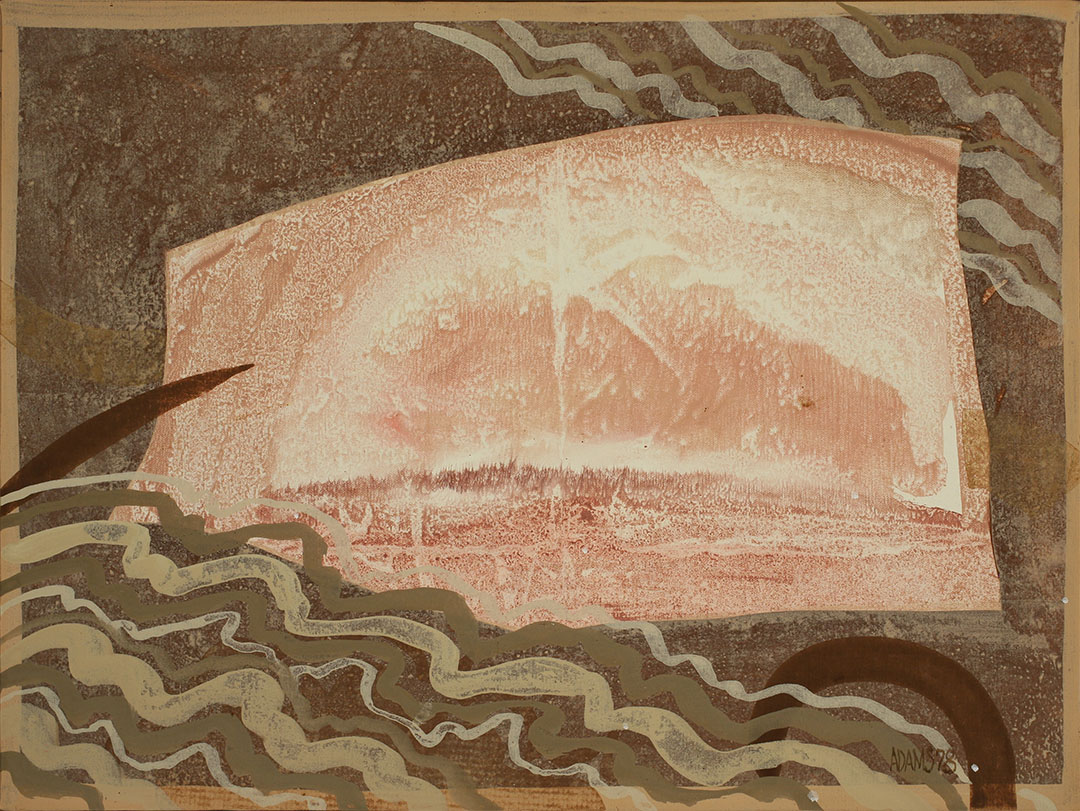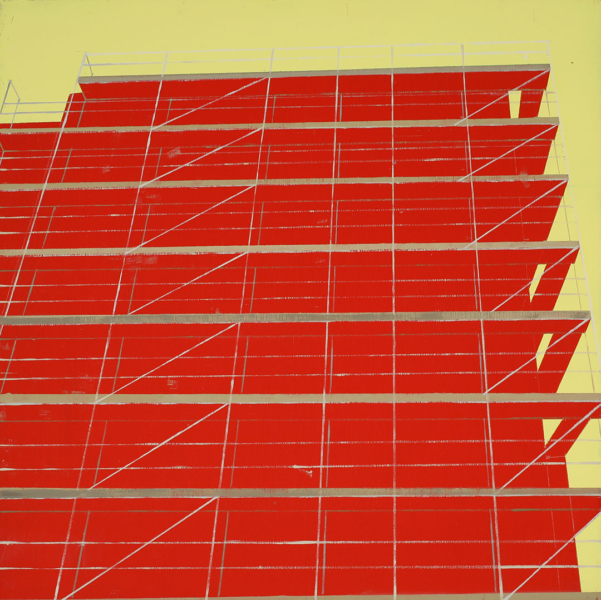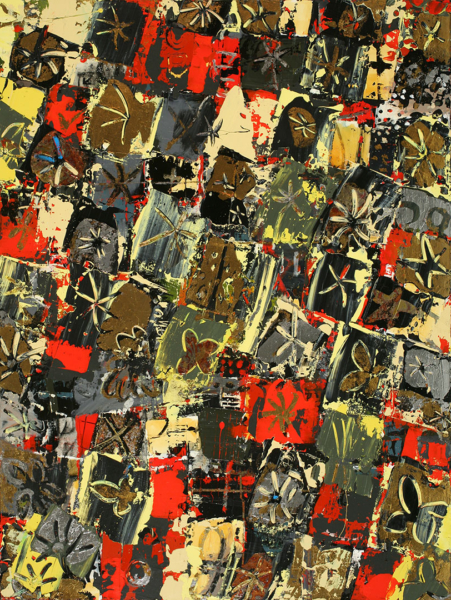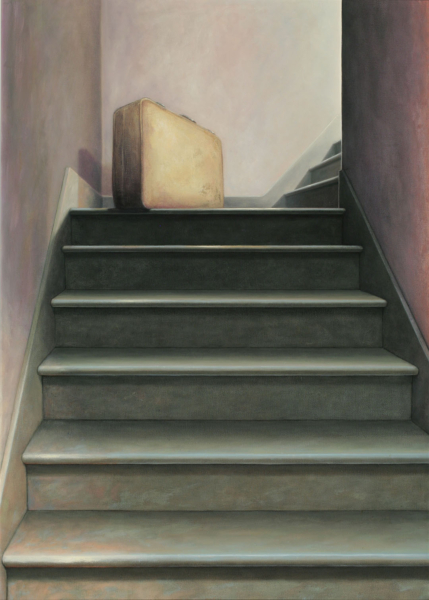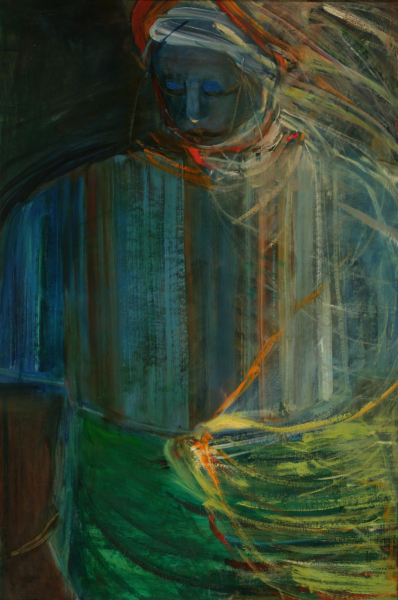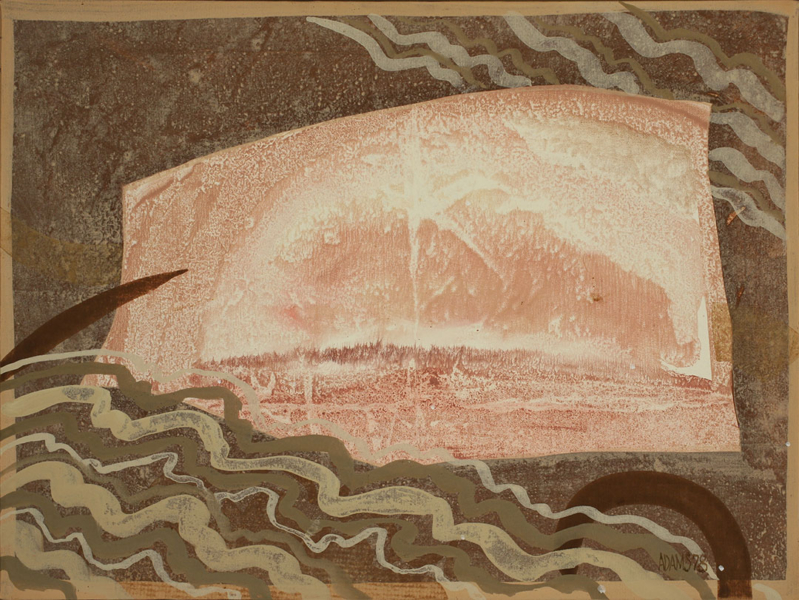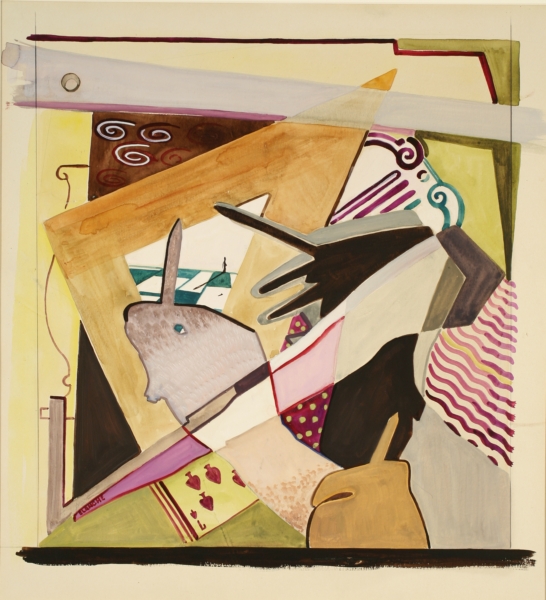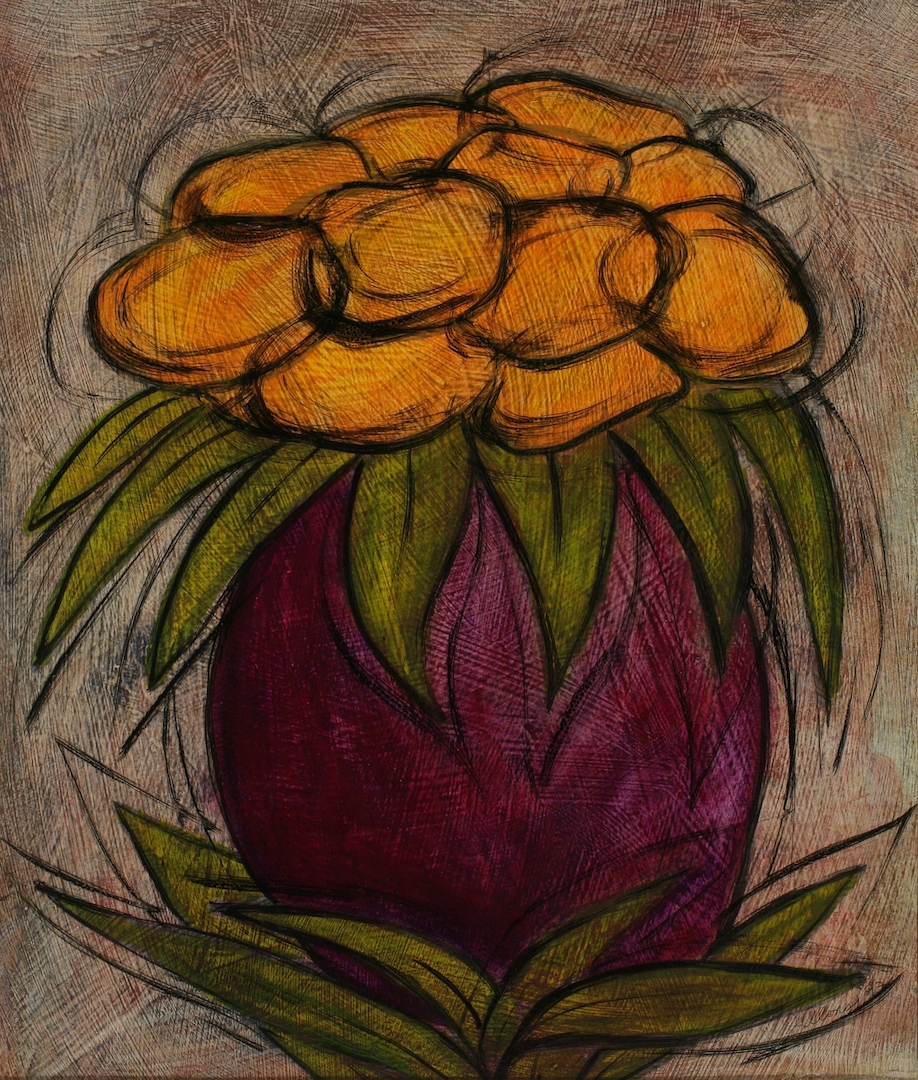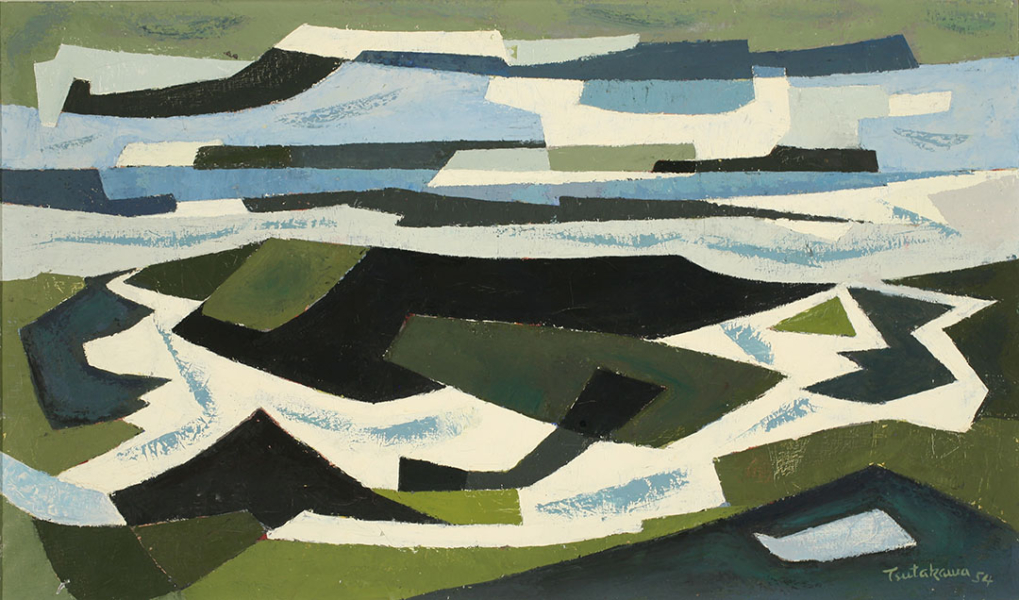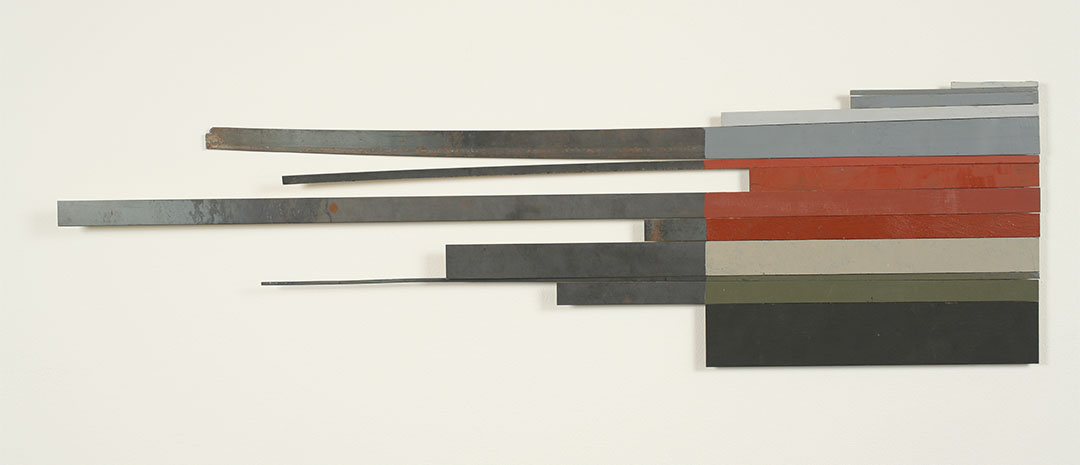Composition refers to how the elements of an artwork are arranged.
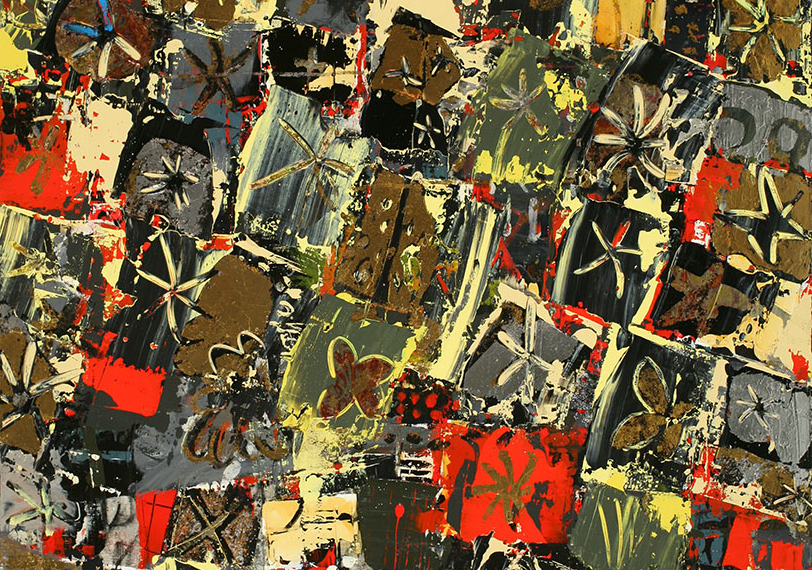
The artist has to think about the relationships between the different parts and how they affect the work.
These decisions will create the structure of the painting as well as the image itself. Is there an illusion of some kind of space? Is there a focal point? Are some parts emphasized more than others? Even simple shifts in these relationships can completely alter a viewer’s experience of the work.
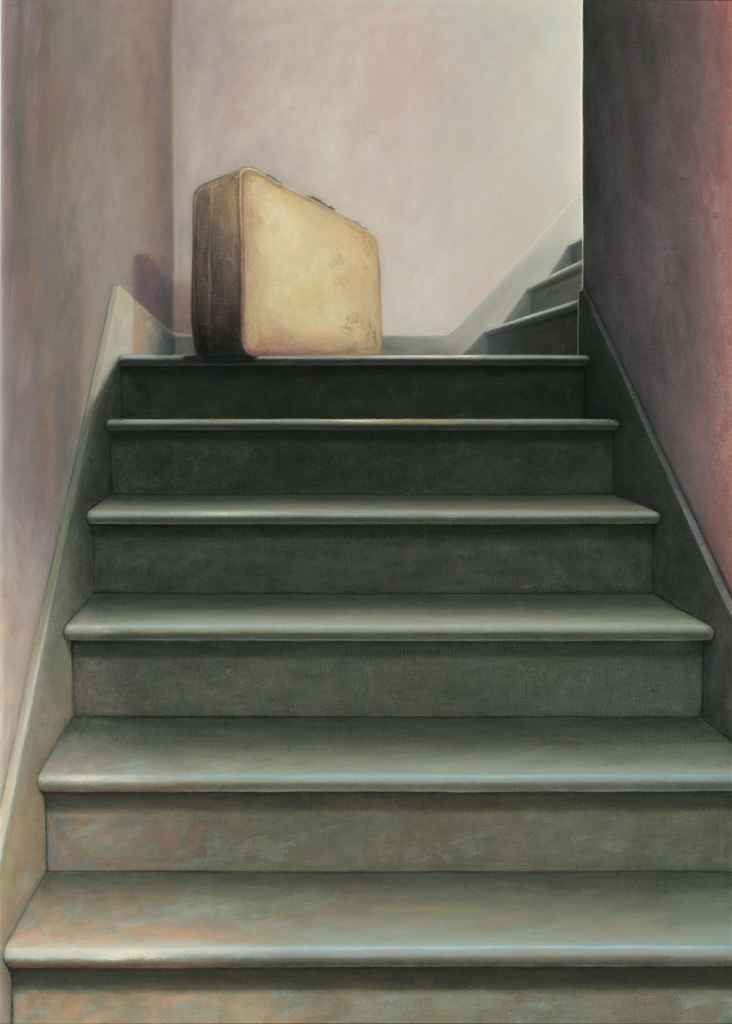
The impact of this work is all due to the composition in my opinion. It’s just a suitcase sitting on a stairway landing, technically a simple still life, but it has drama and raises all sorts of questions. The suitcase is spot lit, making it the focus of the work. The way the stairs fill the bottom half of the work and recede up and back creates a sort of pedestal for it to sit on. The bright light coming down from upstairs suggests something is happening out of our sight. The suitcase is now the main character in many possible stories.
“First I’m thinking. That’s how I work. I think about an image. I turn it around in my head.”
—Gwendolyn Knight
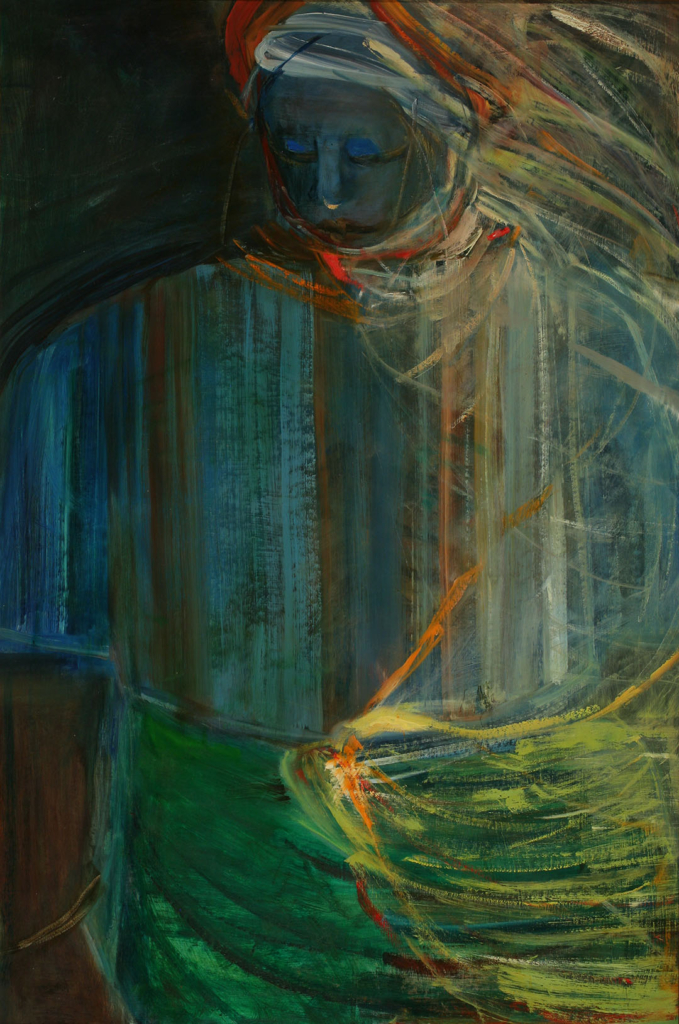
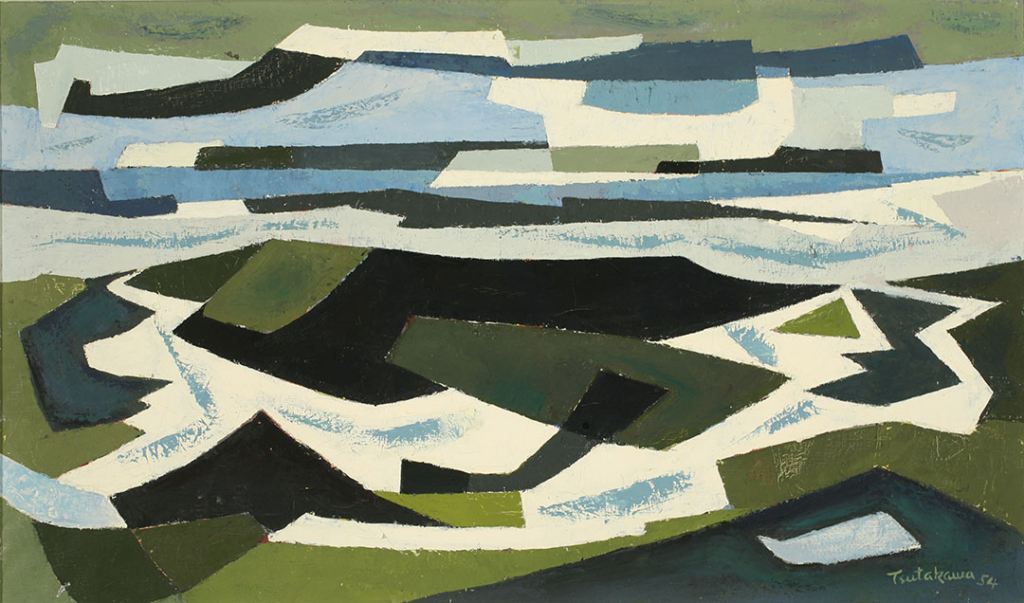
George Tsutakawa’s primary medium was sculpture. The shapes, patterns, and rhythms in nature were the source for most of his subjects. When I visit the ocean it’s the wide horizon, movement of the waves, and constant changes in light that fascinate me most. The tide comes in, swirls around the rocks and recedes, constantly rearranging everything in its path.
Though the forms he used in this painting are sharp edged and geometrical, the patterns Tsutakawa created by layering and repeating them suggest movement not just in the waves but on the beach. Every time I look at this painting, I feel like it has changed subtly.
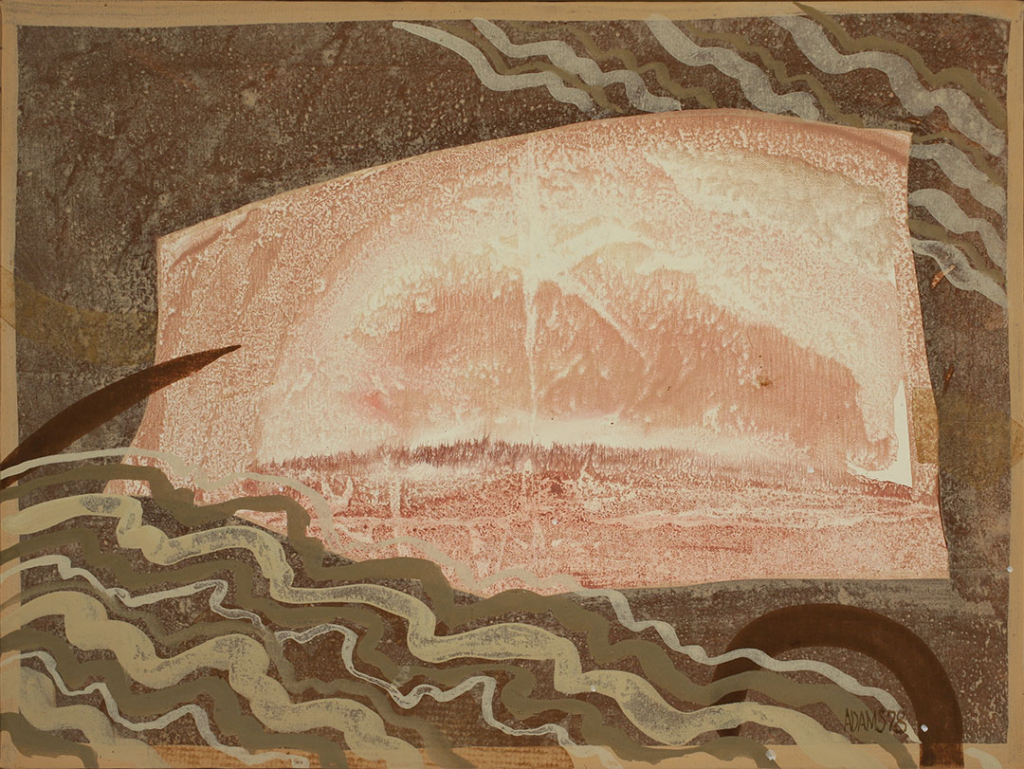
“Landscape expresses the essence of the hills and their texture rather than a hill itself. It could even be a field. I use very muted colors, all the taupes and browns, with many layers of wash.
I tend to like the dry hills and the sagebrush and the sensuality of the hills and what they have, the seasonal changes. There’s a big sky kind of feeling to everything [in Yakima], everything is open….”
—Leo Adams
Painting Deconstructed: Selections from the Northwest Collection was organized by Tacoma Art Museum and generously supported in part by Tacoma Creates.
Exhibition texts by Margaret Bullock, Chief Curator, Curator of Collections and Special Exhibitions unless otherwise noted.
Copyright for the artwork and the photography of the artwork lies with the artist, their assigns, or the museum. Images are available to view here for educational purposes only and are not for commercial use.
Image credits: (banner) Leo Adams. “Untitled (Abstraction)” (detail), 1978. Acrylic on canvas, 18 x 24 in. (45.7 x 61 cm). Tacoma Art Museum. Gift of of Theo Dreyer in memory of Mrs. Ethel Harvey, (mid-page) Laura Castellanos. Detail from “Gonzalez One,” 2004. Acrylic and metal leaf on canvas, 48 x 36 in. (121.9 x 91.4 cm). Tacoma Art Museum. Gift of Scott and Ruth Wilson.
